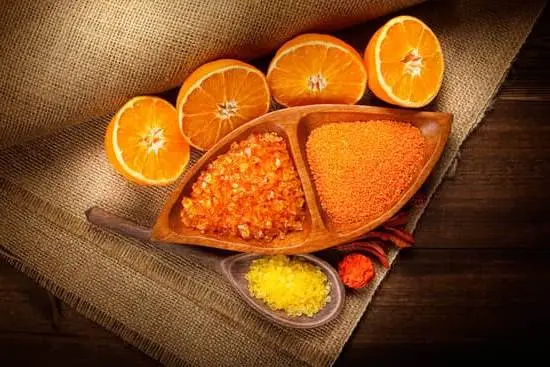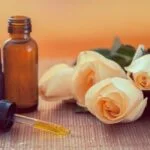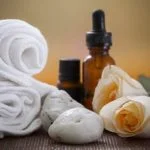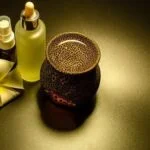Aromatherapy has been used for centuries as a natural way to promote physical, emotional, and mental well-being. Essential oils play a crucial role in this practice, and the right aromatherapy essential oil bottle is essential for harnessing their power. In this article, we will explore the world of aromatherapy and essential oils, including their history, benefits, types, and uses.
The use of aromatic plant compounds for healing and relaxation can be traced back to ancient civilizations such as the Egyptians, Greeks, and Romans. These early cultures recognized the therapeutic properties of essential oils derived from plants and used them in various ways, laying the foundation for modern aromatherapy practices.
Aromatherapy essential oil bottles are a key tool in utilizing these potent plant extracts. They not only serve as a convenient way to store and dispense essential oils but also help protect the oils from degradation caused by light, air, and temperature fluctuations. With the right bottle, one can fully maximize the benefits of aromatherapy in daily life. Let’s delve into the rich history of aromatherapy and essential oils while uncovering their many uses and benefits.
The History and Origins of Aromatherapy
Aromatherapy has been used for centuries as a natural healing remedy, but its origins can be traced back to ancient civilizations such as the Egyptians, Greeks, and Romans. These ancient cultures would use aromatic plant extracts and essential oils for medicinal, spiritual, and cosmetic purposes. The concept of using essential oils for their therapeutic properties eventually evolved into what we now know as aromatherapy.
The history of aromatherapy also includes the contributions of influential figures such as René-Maurice Gattefossé and Jean Valnet, who played significant roles in modernizing and popularizing the practice. Gattefossé, often referred to as the “father of aromatherapy,” conducted research on the healing properties of essential oils after experiencing their remarkable effects firsthand. Valnet further expanded on Gattefossé’s work by using essential oils to treat soldiers’ wounds during World War II.
In recent years, there has been a resurgence of interest in traditional healing practices, including aromatherapy. People are increasingly turning to natural remedies to address health concerns and improve overall well-being. As a result, the historical roots of aromatherapy have become even more relevant in today’s society. Understanding the history and origins of aromatherapy allows individuals to appreciate its rich cultural heritage and time-tested benefits.
- The ancient civilizations that used aromatic plant extracts
- Influential figures in the modernization and popularization of aromatherapy
- The resurgence of interest in traditional healing practices
Benefits of Using Aromatherapy Essential Oil Bottles
Aromatherapy essential oil bottles have gained popularity in recent years due to the numerous benefits they offer. These small bottles contain natural extracts from plants, flowers, and herbs, and have been used for centuries to promote physical, emotional, and mental well-being. The use of essential oil bottles in aromatherapy can help relieve stress, improve sleep quality, reduce anxiety, ease pain, and create a calming atmosphere.
One of the main benefits of using aromatherapy essential oil bottles is their ability to promote relaxation and reduce stress. Certain essential oils such as lavender, chamomile, and bergamot have been shown to have a calming effect on the mind and body. By diffusing these oils using a specialized aromatherapy diffuser or adding them to a warm bath, individuals can experience a sense of peace and tranquility after a long day.
In addition to promoting relaxation, aromatherapy essential oil bottles are also known for their potential to improve sleep quality. Essential oils like cedarwood, sandalwood, and ylang-ylang have sedative properties that can help individuals fall asleep faster and enjoy a deeper sleep. By incorporating these oils into their bedtime routine through methods like pillow sprays or room diffusers, people can experience better sleep patterns and wake up feeling more rested.
| Benefits | Examples |
|---|---|
| Promotes Relaxation | Lavender, Chamomile |
| Improves Sleep Quality | Cedarwood, Sandalwood |
How to Choose the Right Aromatherapy Essential Oil Bottle
When it comes to choosing the right aromatherapy essential oil bottle, there are a few factors to consider in order to ensure the quality and effectiveness of the oils. The first thing to look for is dark-colored glass bottles, such as amber or cobalt blue, as these help protect the oils from light and air, which can cause them to degrade. This is particularly important because essential oils are highly concentrated and can be sensitive to environmental factors.
In addition to the color of the bottle, it’s also important to consider the material of the dropper or cap. For best results, opt for bottles with glass droppers or caps rather than plastic ones, as certain essential oils can degrade plastic over time. It’s also important to ensure that the bottle has a tight-fitting cap or dropper to prevent leakage and preserve the potency of the oil.
Another important consideration when choosing an aromatherapy essential oil bottle is size. Essential oils should be stored in small bottles to minimize exposure to air and light. For individual use at home, 5ml or 10ml bottles are typically sufficient, while larger bottles may be more suitable for professional use or if you frequently use a particular oil.
How to Choose the Right Aromatherapy Essential Oil Bottle
| Factor | Consideration |
|---|---|
| Bottle Color | Amber or cobalt blue glass for protection from light and air |
| Dropper/Cap Material | Glass droppers/caps preferred over plastic for preservation |
| Bottle Size | Small sizes like 5ml or 10ml for individual use; larger sizes for professional use |
Different Types of Essential Oils and Their Uses
Aromatherapy involves the use of essential oils to promote physical and psychological well-being. These oils are derived from various plant sources and each type has its own unique properties and benefits. Here are some different types of essential oils and their uses:
Lavender Oil
Lavender oil is perhaps one of the most popular essential oils used in aromatherapy. It is known for its calming and relaxing properties, making it ideal for stress relief and promoting better sleep. Additionally, lavender oil can also help soothe skin irritations and minor burns.
Peppermint Oil
Peppermint oil is commonly used to ease headaches and migraines due to its cooling effect. It can also aid in relieving nausea, boosting energy levels, improving focus, and alleviating muscle pain when applied topically.
Tea Tree Oil
Tea tree oil is known for its powerful antiseptic properties, making it a popular choice for treating acne, fungal infections, and even as a natural household cleaner. It also has a refreshing scent that can help clear the mind and boost mental clarity.
Lemon Oil
Lemon oil is often used to uplift mood, improve concentration, and reduce feelings of stress or anxiety. Its antifungal properties make it suitable for use in cleaning products as well. When diffused, lemon oil can also help purify the air.
Each type of essential oil comes with its own set of benefits and uses, so it’s important to choose the right one based on your specific needs and preferences. When selecting an aromatherapy essential oil bottle, consider the type of essential oils you plan to use to ensure compatibility with the bottle’s material and design.
The Science Behind Aromatherapy and Essential Oils
Aromatherapy is the practice of using natural oils extracted from flowers, bark, stems, leaves, and other parts of a plant to enhance physical and psychological well-being. These essential oils are often used in conjunction with massage therapy or as part of a holistic healing process. The use of essential oils for therapeutic, spiritual, hygienic, and ritualistic purposes goes back thousands of years, with evidence dating back to ancient civilizations such as the Chinese, Indians, Egyptians, Greeks, and Romans.
The science behind aromatherapy and essential oils lies in the compounds found within these natural substances. Essential oils contain various chemical constituents that have specific effects on the body and mind when inhaled or applied to the skin. For example, lavender essential oil contains linalool and linalyl acetate which are known for their calming and relaxing properties. On the other hand, eucalyptus essential oil contains eucalyptol which is known for its anti-inflammatory and decongestant properties.
In addition to their chemical composition, the way in which aromatherapy essential oil bottles are used also contributes to their effectiveness. Diffusing essential oils into the air allows for inhalation, where the aromatic molecules can interact with the brain’s limbic system triggering emotions and memories.
When applied topically through massage or skincare products, essential oils can be absorbed into the bloodstream and provide their therapeutic benefits throughout the body. With a better understanding of both the chemical makeup of essential oils and how they are utilized, individuals can harness the power of aromatherapy essential oil bottles for improved well-being in their daily lives.
- The chemistry of essential oils
- How different compounds affect the body
- Methods of application (inhalation vs topical use)
- Evidence-based research on aromatherapy
- The connection between scent and emotions
DIY Aromatherapy Recipes Using Essential Oil Bottles
Aromatherapy has gained popularity for its therapeutic benefits and the use of essential oils in promoting relaxation, easing stress, and improving overall well-being. One way to fully enjoy the benefits of aromatherapy is by creating do-it-yourself (DIY) recipes using essential oil bottles. These DIY recipes allow individuals to customize their own blends and products for various purposes such as massage oils, room sprays, bath salts, and more.
When creating DIY aromatherapy recipes using essential oil bottles, it is important to first select the appropriate essential oils based on their therapeutic properties and intended use. For example, lavender essential oil is known for its calming effects and is often used for relaxation and sleep support, while peppermint essential oil is invigorating and can be used for natural pain relief.
By understanding the properties of different essential oils, individuals can create blends that cater to their specific needs and preferences.
One popular DIY aromatherapy recipe is creating a homemade room spray using essential oil bottles. To make a refreshing room spray, simply combine distilled water with a few drops of preferred essential oils in a spray bottle. For example, combining citrus-based essential oils such as lemon or sweet orange with a hint of lavender can create an uplifting and fresh scent perfect for spritzing in any room.
This simple DIY recipe allows individuals to create their own natural air freshener without the harsh chemicals found in commercial products. With endless possibilities, DIY aromatherapy recipes using essential oil bottles offer a creative and personalized approach to enjoying the benefits of aromatherapy in daily life.
Tips for Properly Storing and Caring for Aromatherapy Essential Oil Bottles
Proper storage and care of aromatherapy essential oil bottles are crucial in maintaining the quality and effectiveness of the oils. These tips will help you ensure that your essential oils remain potent and safe to use.
Store in a Cool, Dark Place
It is important to store your aromatherapy essential oil bottles in a cool, dark place to prevent them from deteriorating. Exposure to sunlight and heat can cause the oils to degrade and lose their therapeutic properties. Additionally, it is best to keep the bottles tightly sealed when not in use to avoid oxidation.
Avoid Contamination
To prevent contamination of your essential oils, make sure that the bottle dropper or cap is always clean before using it. Contaminants from dirty droppers or caps can affect the purity of the oil and reduce its shelf life.
Use Proper Labels
Properly labeling your aromatherapy essential oil bottles is important for easy identification. Include information such as the botanical name of the oil, its expiration date, and any safety precautions or usage instructions. This will help you keep track of each oil’s shelf life and maintain safety protocols for usage.
By following these tips for storing and caring for your aromatherapy essential oil bottles, you can prolong the lifespan of your oils and ensure that they continue to provide their therapeutic benefits for as long as possible. Proper maintenance also helps in preserving the integrity of each oil so that they can be safely used for various applications in aromatherapy practices.
Conclusion
In conclusion, it is evident that the use of aromatherapy essential oil bottles can greatly enhance our daily lives. From their historical origins to the science behind their effectiveness, these small bottles carry a powerful punch.
The benefits of using essential oils for aromatherapy are vast, ranging from reducing stress and anxiety to promoting better sleep and overall well-being. The wide range of essential oil options available also allows for personalized blends to cater to each individual’s specific needs.
Choosing the right aromatherapy essential oil bottle is crucial in maximizing its benefits. Whether it’s considering the quality and purity of the essential oil or selecting the appropriate type of oil for your desired outcome, taking the time to make an informed choice will ensure a more effective experience. Additionally, proper storage and care for these bottles is important in maintaining their potency and prolonging their shelf life.
With the plethora of DIY recipes available, incorporating aromatherapy into our daily routines has never been easier. From creating custom blends for diffusers or massage oils to using them in skincare or household cleaning products, there are countless ways to harness the power of aromatherapy in our everyday lives. By understanding how to utilize aromatherapy essential oil bottles effectively, we can tap into their potential benefits and truly enhance our overall well-being.
Frequently Asked Questions
What Bottle Is Best for Essential Oils?
The best bottles for essential oils are typically made of dark glass, such as amber or cobalt blue, to protect the oils from sunlight and degradation. Glass also does not react with the oils, unlike plastic, so it’s the preferred choice for storing essential oils.
Why Can’t You Use Plastic Bottles With Essential Oils?
Plastic bottles are not suitable for storing essential oils because the oils can degrade the plastic, leading to contamination of the oils and potentially harmful reactions. Additionally, plastic bottles do not provide adequate protection against light and UV rays, which can also affect the quality of the oils over time.
Is It Safe to Inhale Essential Oils From the Bottle?
Inhaling essential oils directly from the bottle is generally considered safe for most people when done in moderation. However, it’s important to be mindful of individual sensitivities and potential adverse reactions. It’s always best to dilute essential oils before inhalation or use a diffuser for a more controlled dispersion of the oil into the air.

Are you looking for a natural way to improve your health and wellbeing?
If so, aromatherapy may be the answer for you.





